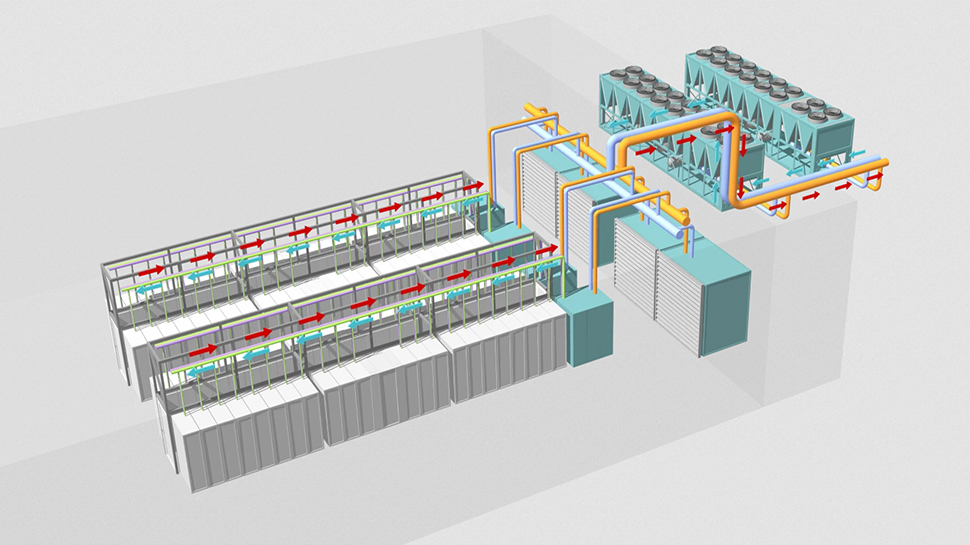Did extreme overclockers inspire Microsoft to develop closed loop liquid cooling for data centers? I'd like to think so
Microsoft expects to save over 125 million liters of water per year, per site

- Zero-water evaporation system will virtually eliminate water usage across Microsoft-owned data centers
- This will save tens of billions of liters of water over the lifetime of Microsoft's parc of data centers
- The key to delivering this solution was implementing chip level cooling solutions at scale
Microsoft has introduced a new data center design which eliminates the need for water evaporation in cooling, addressing concerns about water usage in regions facing shortages and droughts.
This new cooling system, launched in August 2024, optimizes AI workloads while conserving water, and forms part of Microsoft's Datacenter Community Pledge, helping to support local communities and reducing environmental impact.
The system works by using chip-level liquid cooling, which provides precise temperature control without relying on water evaporation. While water is still used for administrative needs such as restrooms and kitchens, the cooling system itself does not require fresh water.
Pilot sites will be live next year
The system operates on a closed loop, meaning water is circulated continuously between servers and chillers without needing to be replenished. Closed-loop liquid cooling has been used by overclockers (including me) for years to keep temperatures stable during resource-heavy workloads, making it a natural fit for modern data centers with their intensive AI demands.
Water efficiency in data centers is measured using Water Usage Effectiveness (WUE), which calculates water consumption relative to energy use. Microsoft says by moving to closed loop liquid cooling it expects to save over 125 million liters of water per year, per data center.
"We have been working since the early 2000s to reduce water use and improved our WUE by 80% since our first generation of data centers,” said Steve Solomon, Vice President, Datacenter Infrastructure Engineering, Microsoft.
“As water challenges grow more extreme, we know we have more work to do. The shift to the next generation data centers is expected to help reduce our WUE to near zero for each data center employing zero-water evaporation. As our fleet expands over time, this shift will help reduce Microsoft’s fleetwide WUE even further."
Are you a pro? Subscribe to our newsletter
Sign up to the TechRadar Pro newsletter to get all the top news, opinion, features and guidance your business needs to succeed!
New data centers in Phoenix, Arizona, and Mt. Pleasant, Wisconsin, will serve as pilot sites for this technology in 2026. All future Microsoft data centers will adopt this cooling approach going forward, with the first sites expected to be operational in 2027.
Eliminating evaporative cooling does increase power usage effectiveness (PUE), as mechanical cooling requires more energy. However, the use of high-efficiency economizing chillers and elevated cooling temperatures will offset some of this demand.
You might also like

Wayne Williams is a freelancer writing news for TechRadar Pro. He has been writing about computers, technology, and the web for 30 years. In that time he wrote for most of the UK’s PC magazines, and launched, edited and published a number of them too.
You must confirm your public display name before commenting
Please logout and then login again, you will then be prompted to enter your display name.